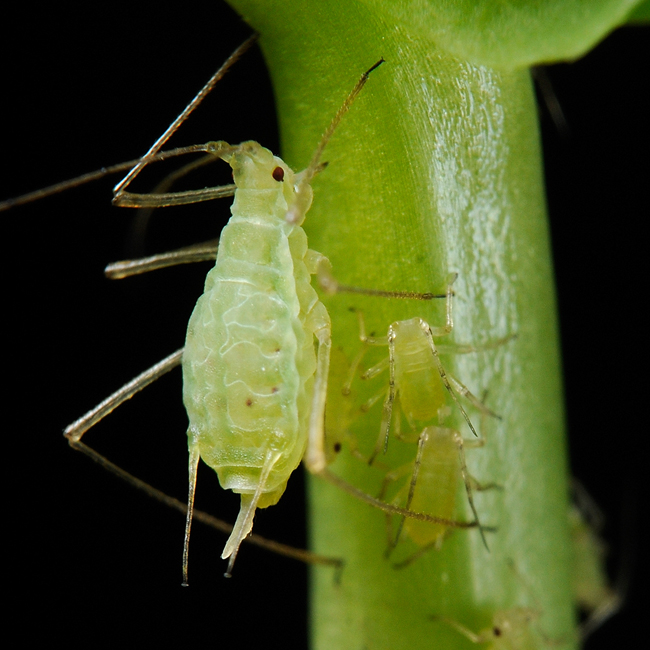
When pea aphids (Acyrthosiphon pisum) are fleeing a browsing cow, the tiny ones try to ride the much larger ones to safety:
In a lab setup, hitchhiking got very young aphids safely across open ground about four times faster than scrabbling to safety on their own, the researchers found. These newborn aphids, not even 12 hours old, were not just seeking some object to clamber onto. They soon lost interest if presented with beads or dead adults but held on to live grown-up aphids in motion, the researchers report December 6 in Frontiers in Zoology.Susan Milius, “Pea aphid youngsters use piggyback rides to escape a crisis” at ScienceNews
Only some adults would let them ride (5% succeeded) and kinship didn’t apparently matter (sorry, Darwinian kin selectionists; this time, it’s any old port in a storm).
At any rate, even insect minds, so to speak, are more complex than we used to think.
Abstract: Background: Upon the detection of imminent peril, pea aphids (Acyrthosiphon pisum) often drop off their host plant. Dropping in response to insect enemies is intermittent in nature, but when a mammalian herbivore feeds on their host plant, a large mixed-age group of aphids usually drops off the plant at once. Aphids that reach the ground are confronted with new, hostile environmental conditions and must therefore quickly walk toward a suitable host plant. The longer it takes an aphid to reach a host plant, the more it is exposed to the risks of starvation, desiccation and predation.
Results: We found that young nymphs, which have limited mobility and high mortality on the ground, quickly climb on conspecific (not necessarily parental) adults and cling to them before the latter start walking in search of a plant. This “riding” behavior is likely to be adaptive for the nymphs, for it shortens their journey and the time they spend off a host plant. Adults however, seem to be irritated by the riding nymphs, as they often actively try to remove them.
Conclusions: After dropping from the host plant, young aphid nymphs travel at least part of the way back to a plant on the backs of adults. For the riding behavior to take place, nymphs need to successfully find adults and withstand removal attempts.(open access) Standing on the shoulders of giants: young aphids piggyback on adults when searching for a host plant Moshe Gish and Moshe Inbar Frontiers in Zoology201815:49 https://doi.org/10.1186/s12983-018-0292-7© The Author(s). 2018 Received: 27 May 2018 Accepted: 5 November 2018Published: 6 December 2018 More.
Follow UD News at Twitter!
See also: J. Scott Turner and the “Giant Crawling Brain”
and
Sublime Mold Does Intelligence Always Reside in the Brain? Maybe Not!